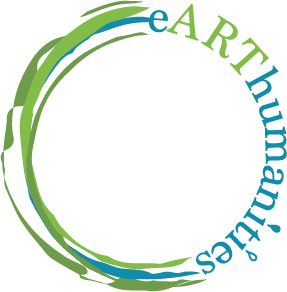Archaeo-botany is a growing field. Why are we taking such an interest in human plant relationships now? Why Central Asia in particular?
I think the trends in archaeobotany can be attributed to two things right now. The first is improvement in methods – more archaeologists are employing the basic techniques that recover plant remains from archaeological excavations, and these data are now being met with sophisticated scientific approaches, for example the creation of open-access, global databases, the development of isotopic studies that reconstruct human and animal diets, and advances in the study of ancient plant DNA. So, we can do more and say more about human-plant relationships in the ancient past than ever before. The second influence, of course, is our current concerns about climate change, which raise numerous questions about humanity’s long-term role in the environment. Environmental archaeology generally, and archaeobotany in particular, are useful fields for telling us more about how humans engage the biotic world across time.
Central Asia is interesting because of its geographic position and cultural heritage – a region traditionally associated with nomadic peoples where goods and ideas were transferred across the Old World. Central Asia presents a wonderful opportunity to investigate the globalization of agriculture and food in the ancient past, and also to think about the diverse ways humans interact with plants beyond intensive farming.
What can the plant-people relationship of the past teach us about the future?
A wonderful question! Archaeology is somewhat unique as a field of study in that it allows empirical observations of the long-term, millennial-scale evolution of human-environment dynamics. No other scientific pursuit can really provide that. So, in that sense, if we want to know how human environmental behaviors, for example, deforestation, might impact an ecosystem hundreds or thousands of years later, archaeology (and archaeobotany) can help to answer that question. Archaeology and archaeobotany also tell us about the diversity of human environmental behaviors in the past – different production systems that supported ancient communities, food staples that were critical in the past that we no longer utilize, and the ways people adapted in innovative ways to ecosystem change. I don’t think these are necessarily practices that we can simply adopt in today’s world and expect similar outcomes, but they do tell us something about our capacities for adaptation and survival.
How do plant remains help us trace globalization?
If you know the origins of globally-distributed crops, then you can use archaeological plant remains to trace their pathways of distribution through time. For example, we know that wheat and barley were domesticated in the Near East, and millet and rice in China. At some point, these cereal crops made their way across the Asian continent to the populations on the other side. When? Plant remains recovered from archaeological sites, with their corresponding radiocarbon dates, tell us when the groups in the middle acquired these resources and when they were first transmitted to new environments. The plants thus serve as a kind of metric for the globalization of at least one form of human culture – food. A more interesting set of questions is how and why these cultural globalizations happened, but this is far more complicated to answer!
What does the story of tomato tell us about globalization? And about the dwindling number of plant species that we consume?
To my mind, the story of the tomato is one that reminds us that human and plant diversity do not disappear under globalization. Yes, the vast majority of the tomatoes grown and consumed worldwide today are hybrid varieties with highly reduced diversity, but heirloom tomato production takes place alongside this commercial production, managed by seed savers and small communities of growers that continually innovate to produce novel forms. The diversity of heirloom tomatoes matches the diversity of human cultural practices, and this all forms at the local level as people engage in highly varied responses to globalization (the Columbian Exchange that brought tomatoes to the Old World). Of course, we can also say looking at the case of the tomato that humans are equally capable of producing striking uniformities in the natural world from these same cultural processes – diversity and uniformity under globalization are not mutually exclusive.

